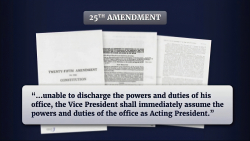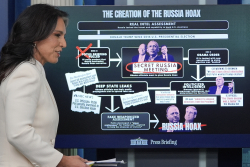Eventually, another collision, possibly even deadlier than the DC crash, will occur due to poor air traffic control.
The Federal Aviation Authority’s (FAA) efforts to provide critically needed upgrades to its air traffic control system are failing. That was according to Elon Musk from his time as head of the Department of Government Efficiency. The current secretary of transportation, Sean Duffy, fought Musk repeatedly over the latter’s attempts to streamline the entire air traffic control (ATC) apparatus.
Take, for instance, the recent near-collision between a B-52H long-range bomber and a SkyWest jet in the bucolic skies over North Dakota. Here is an instance where Musk was right, and Duffy was very wrong. Because this near miss was entirely the result of a failing ATC system.
The Near-Miss
On July 18 of this year, during the opening day of the North Dakota State Fair in Minot, North Dakota, a potentially catastrophic incident unfolded when a US Air Force B-52H Stratofortress bomber nearly crashed into SkyWest Airlines Flight 3788, an Embraer ERJ-175 regional jet operating as a Delta Connection service from Minneapolis to Minot International Airport.
This event was even captured on camera by a fairgoer, further humiliating the Air Force at a time when the US military is still trying to make up for the horrific events that occurred in the skies over Washington, DC, in January. At that time, a US Army Black Hawk helicopter crashed into a civilian airliner coming in for a landing at Reagan National Airport, resulting in all lives on both aircraft being lost.
As thousands gathered at the state fairgrounds for festivities in North Dakota, a scheduled B-52 flyover approved by the Federal Aviation Authority (FAA) was set to occur. The bomber, based at nearby Minot Air Force base, was performing a low-level pass over the crowd, which included North Dakota governor Kelly Armstrong. Simultaneously, the SkyWest jet, carrying 76 passengers and four crewmembers, was on final approach to land at Minot International Airport.
As the commercial plane descended, its pilot received conflicting instructions from air traffic control—first to turn right, then left—before spotting the massive B-52 on a converging path. Reacting swiftly, the pilot executed an “aggressive maneuver,” aborting the landing with a sharp go-around before safely touching down.
“This is not normal at all. I don’t know why they didn’t give us a heads-up.” The SkyWest jet pilot is reported to have told the press upon landing, referring to the FAA and Air Force for not having adequately alerted him to the presence of the massive B-52H in his airspace.
Why Did This Occur?
Preliminary investigations point to a breakdown in communication between military and civilian air traffic controllers as the primary cause. Minot International Airport’s control tower, operated by a private contractor rather than by FAA employees, lacks radar and relies solely on visual observations. Although the B-52’s flyover was pre-approved, controllers failed to alert the bomber crew about the incoming commercial flight or vice versa.
The Air Force confirmed that while plans were shared with Minot Approach Control, the tower did not relay critical information about the SkyWest jet. This lapse echoes the aforementioned mid-air collision in Washington, DC. There was also a near-miss in March involving Air Force T-38 jets and a Delta Airbus A319.
In Other Words, Elon Musk was Right
In response, the FAA launched an investigation to determine the exact proximity of the aircraft—estimates suggest they came within hundreds of feet. The Air Force is “looking into the matter,” and SkyWest Airlines is conducting its own review. Representative Betty McCollum called for the urgent installation of radar technology at Minot to prevent future incidents in shared military-civilian airspace.
The near collision, while resulting in no injuries, underscores the vulnerabilities in aviation infrastructure, particularly at airports near military bases. We are now seeing—repeatedly—the reasons why Musk’s calls for totally overhauling and modernizing America’s failing air traffic control system are more than necessary.
Eventually, another collision, possibly even deadlier than the DC crash, will occur.
About the Author: Brandon J. Weichert
Brandon J. Weichert, a Senior National Security Editor at The National Interest as well as a contributor at Popular Mechanics, who consults regularly with various government institutions and private organizations on geopolitical issues. Weichert’s writings have appeared in multiple publications, including the Washington Times, National Review, The American Spectator, MSN, the Asia Times, and countless others. His books include Winning Space: How America Remains a Superpower, Biohacked: China’s Race to Control Life, and The Shadow War: Iran’s Quest for Supremacy. His newest book, A Disaster of Our Own Making: How the West Lost Ukraine is available for purchase wherever books are sold. He can be followed via Twitter @WeTheBrandon.
Image: DVIDS

















